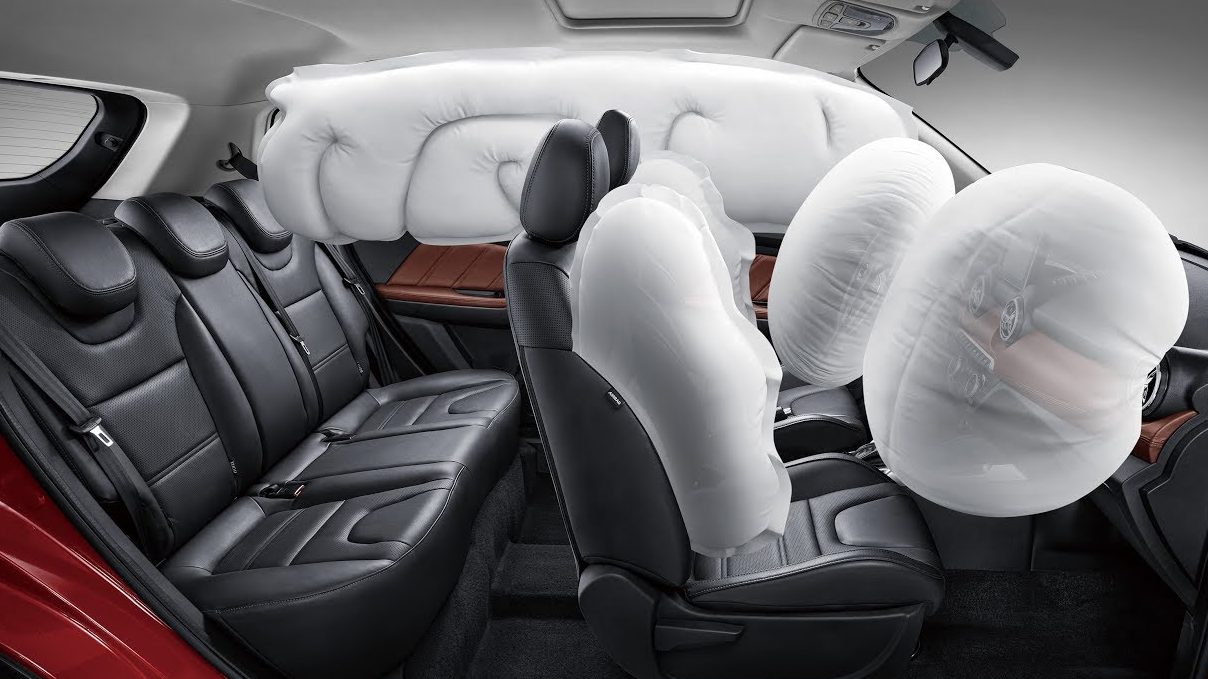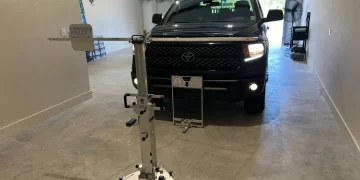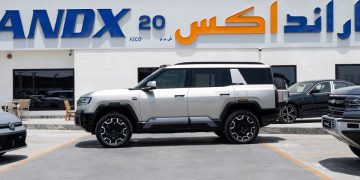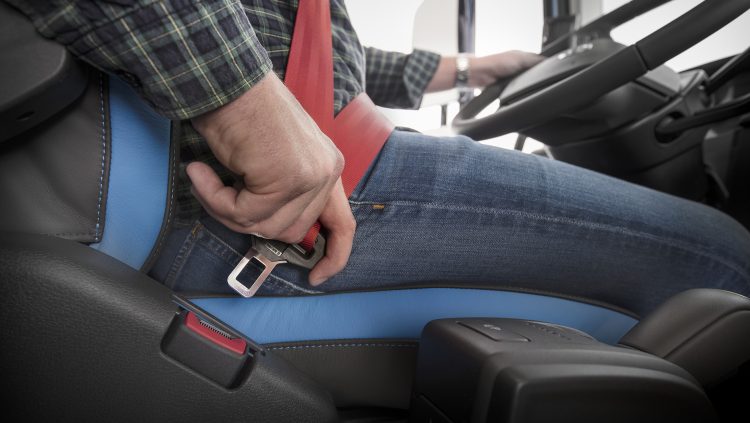1. The Evolution of Automotive Safety Technology
Automotive safety has always been a critical concern. The early days of the automobile saw the introduction of basic safety features, including seat belts and braking systems. Over time, as the automotive industry evolved, so did the technology designed to protect vehicle occupants. The 1950s saw the invention of the seatbelt, which became a standard safety feature in cars. In the 1970s, airbags were introduced, further enhancing the safety of vehicles. By the 1990s and 2000s, more advanced safety systems like anti-lock braking systems (ABS), electronic stability control (ESC), and traction control systems (TCS) became common in vehicles.
However, with the rise of new technologies and advancements in artificial intelligence, sensors, and data analytics, the automotive industry is now entering a new era of safety. The goal is not just to protect passengers after a crash but to prevent accidents from occurring altogether. Modern safety technology focuses on both active and passive safety features to offer a comprehensive approach to vehicle protection.
2. Passive Safety Features: Protection After Impact
Passive safety features are those that activate once a collision has occurred or when the vehicle’s systems detect that an impact is imminent. These features aim to minimize injury to passengers and drivers during an accident. While active safety technologies focus on accident prevention, passive safety systems are designed to protect occupants if a crash happens.
- Airbags: Airbags have been a standard feature in cars for decades, but recent advancements have made them more effective and versatile. Today’s airbags are not only installed in the steering wheel and dashboard but also in side panels, seats, and even between passengers to reduce the risk of injury during a side-impact crash. Advanced airbag systems can detect the severity of a crash and deploy at different speeds depending on the force of impact.
- Seat Belts: Seat belts remain one of the most important passive safety features in vehicles. Modern seat belts are designed with pretensioners that automatically tighten the belt in the event of a crash to keep the occupants securely in their seats. In addition, load limiters reduce the pressure exerted on the chest during an accident, while adjustable seat belt anchors help achieve an optimal fit for individuals of various sizes.
- Crumple Zones: Modern vehicles are designed with crumple zones in the front and rear of the car. These zones are designed to absorb and dissipate the energy generated during a crash, reducing the impact on the vehicle’s occupants. By deforming in a controlled manner, crumple zones help protect passengers by reducing the severity of the collision forces.
- Side-Impact Protection: Side-impact collisions are among the most dangerous types of accidents, as they often involve little protection for the vehicle’s occupants. To address this, manufacturers have developed side-impact airbags and reinforced side structures that help absorb impact energy and protect passengers in the event of a side collision.
- Pedestrian Safety: In addition to protecting vehicle occupants, car manufacturers are focusing on improving safety for pedestrians. Modern vehicles are equipped with features like active hoods that can lift upon impact with a pedestrian, reducing the severity of head injuries. Additionally, pedestrian detection systems and automatic emergency braking (AEB) are increasingly being incorporated into cars to help avoid accidents with pedestrians altogether.
3. Active Safety Features: Preventing Accidents Before They Happen
While passive safety features are designed to protect you once an accident has occurred, active safety systems work to prevent collisions from happening in the first place. These technologies use advanced sensors, cameras, and radar to detect potential hazards and intervene to avoid or mitigate an accident. The rapid development of active safety features is one of the key ways that automotive safety is advancing.
- Automatic Emergency Braking (AEB): AEB systems are designed to detect an impending collision and automatically apply the brakes if the driver does not react in time. This feature has proven to be highly effective in reducing rear-end collisions and minimizing the severity of crashes. AEB systems can detect other vehicles, pedestrians, and cyclists and can operate at various speeds, from city driving to highway speeds.
- Lane Departure Warning (LDW) and Lane Keeping Assist (LKA): Lane departure warning systems alert the driver when the vehicle drifts out of its lane without the use of turn signals. Lane-keeping assist systems take this a step further by gently steering the vehicle back into its lane if the driver does not respond to the warning. Together, these systems help prevent lane-keeping accidents caused by distracted or drowsy driving.
- Adaptive Cruise Control (ACC): Adaptive cruise control takes the concept of traditional cruise control and enhances it by using radar and cameras to maintain a safe distance from the vehicle in front. The system can automatically adjust the vehicle’s speed based on traffic conditions, reducing the likelihood of rear-end collisions and helping drivers maintain a safer following distance.
- Blind Spot Detection (BSD): Blind spot detection systems use sensors to monitor the areas adjacent to a vehicle and alert the driver when another vehicle is in the blind spot. This helps prevent accidents during lane changes, particularly on highways and busy roads.
- Rear Cross-Traffic Alert (RCTA): This system uses sensors to detect traffic approaching from the sides when reversing out of parking spaces or driveways. It alerts the driver if a vehicle or pedestrian is approaching, reducing the risk of collisions when backing up.
- Forward Collision Warning (FCW): Forward collision warning systems use cameras and radar to detect objects or vehicles in front of the car and alert the driver if a potential collision is imminent. This technology is often paired with automatic emergency braking, providing an additional layer of protection if the driver does not take action.
- Traction Control and Electronic Stability Control (ESC): These systems are designed to maintain vehicle stability and control under slippery or challenging driving conditions. Traction control helps prevent wheel slip by applying brakes to individual wheels, while electronic stability control assists drivers in maintaining control during oversteering or understeering situations, particularly during emergency maneuvers.

4. The Role of Artificial Intelligence and Machine Learning
Artificial intelligence (AI) and machine learning are playing an increasingly important role in the development of automotive safety technology. These technologies can process large amounts of data from sensors, cameras, and radar systems to make real-time decisions that can prevent accidents.
- Advanced Driver Assistance Systems (ADAS): AI is at the heart of many advanced driver assistance systems. These systems use machine learning algorithms to interpret data from cameras and sensors and make real-time decisions about the vehicle’s behavior. For example, AI-powered systems can help with lane-keeping, adaptive cruise control, and collision avoidance by continuously learning from driving data and improving over time.
- Autonomous Driving: One of the ultimate goals of automotive safety technology is the development of fully autonomous vehicles that can drive without human intervention. While fully autonomous cars are not yet common on the road, they are rapidly advancing. Companies like Tesla, Waymo, and others are using AI and machine learning to enable vehicles to make decisions in real-time, such as recognizing pedestrians, cyclists, and other obstacles, and responding accordingly.
- Predictive Safety Features: AI can also be used to predict potential hazards before they occur. For example, predictive safety systems can analyze driving patterns, weather conditions, and road hazards to anticipate potential risks and take preventive measures, such as adjusting speed or alerting the driver.
5. The Future of Automotive Safety: What’s Next?
The future of automotive safety is focused on two key objectives: making vehicles safer for occupants and preventing accidents altogether. As technology continues to evolve, we can expect to see further advancements in both passive and active safety features.
- Vehicle-to-Vehicle (V2V) Communication: One of the next major innovations in automotive safety is vehicle-to-vehicle (V2V) communication. This technology allows vehicles to communicate with each other in real-time, sharing information about their speed, location, and direction. By exchanging this data, vehicles can alert each other to potential dangers, such as upcoming collisions or sudden braking events. V2V communication has the potential to significantly reduce the risk of accidents caused by driver error and improve overall road safety.
- Vehicle-to-Infrastructure (V2I) Communication: In addition to V2V communication, vehicle-to-infrastructure (V2I) communication is another emerging technology. This allows vehicles to communicate with traffic signals, road signs, and other infrastructure, providing real-time updates on traffic conditions, road closures, and hazards. V2I communication has the potential to reduce congestion and improve traffic flow, making driving safer and more efficient.
- Advanced Autonomous Driving Systems: The development of fully autonomous vehicles is still in progress, but the goal is to create cars that can drive themselves with minimal human input. With advances in AI, machine learning, and sensor technology, we are moving closer to a future where autonomous cars can make decisions that ensure the safety of all road users.
Conclusion
The automotive industry is making significant strides in the development of safety technologies that are transforming the driving experience. From advanced active safety features that help prevent accidents to passive safety systems designed to protect passengers in the event of a crash, the evolution of automotive safety continues to improve the lives of drivers and passengers. The integration of artificial intelligence, machine learning, and advanced sensors is paving the way for even greater advancements in automotive safety, with the ultimate goal of preventing accidents altogether and ensuring that everyone on the road is safe.
As technology continues to evolve, the automotive industry will undoubtedly face new challenges and opportunities. With the rise of electric and autonomous vehicles, the future of automotive safety looks promising, offering even greater levels of protection and safety for all road users.


































Discussion about this post